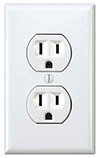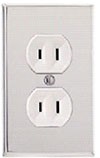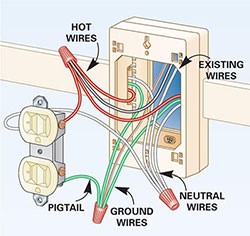Medical power supply with Class II rating for home-use devices
Leo Cheong / MWUSA
A home use medical device is a medical device intended for users in any environment outside of a professional healthcare facility. The home care setting is a challenging environment. Because it is very different from the hospital setting, it often presents additional risks to patients and providers. A home’s age and structure can affect the quality of care, especially when using medical devices. For example, older homes may not have the electrical outlets needed for some medical devices. For instant, electrical grounding plays an important role in such environment.


| Fig. 1 | Fig. 2 |
| Grounded, North America 3-prong AC outlet | Ungrounded, North America 2-prong AC outlet |
In certain residential houses, which were built back in 70s or 80s, electrical grounding may or may not exist in those structures. Even though the electrical outlet has grounding connection available, the electrical conductivities and wiring quality are questionable. Poor electrical conductivities of the grounding path, could introduce higher leakage-current (or touch-current) to the patient than it supposed to be. In some applications, such leakage-current (or touch-current) not only degrade the performances of the medical device, but also it could cause fatal failures to patients and putting lives in dangers. Fig 3. shows the typical electrical wiring scheme in N.A. residential structures. Wires are spliced together with a twist-on “nut”. The connection quality varies depends on electrician’s skill level.

| Fig. 3 |
| Typical wiring connection for 3-prong grounded AC outlet |
As result, home-use medical-device is usually appreciated Class II electrical equipment (without FG grounding), which allows device manufacturer to eliminate (or reduce) the risk to the patient by operating the devices.
For instance, MEAN WELL engaged with a top self-branded healthcare equipment manufacturer on their next generation home-use dialysis system, which required a Class II built-in power supply. MEAN WELL actively worked with the development team all the way from concept to implementation stages. Finally MEAN WELL delivered a standard-modify solution from our RPD-160B (3” x 5”, medical-grade, dual-output, open-frame type power supply) with Class II rating, which met all requirements and provided Class II solution to the OEM manufacturer.
In conclusion, many countries are facing demographic aging problem. The increase in senior population resulted in higher demands for home-use medical-device to provide proper medical treatments in their convenience time and schedule. In general, we expect the Class II requirement to become a main trend for medical equipment market.
